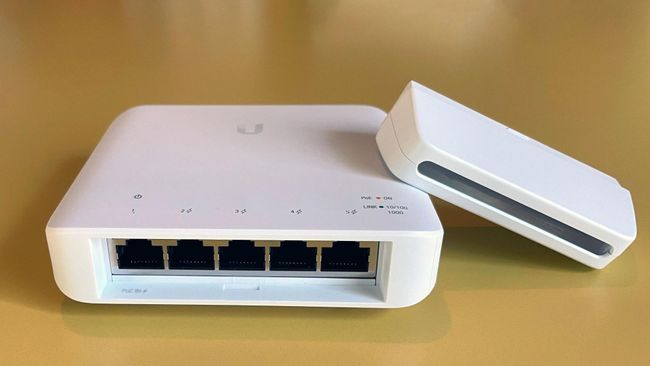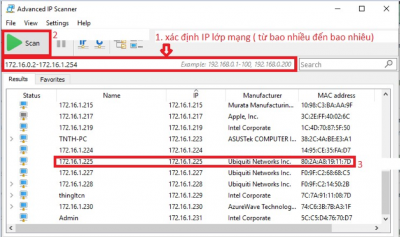

- #Unifi ssh copy file to local install
- #Unifi ssh copy file to local password
- #Unifi ssh copy file to local mac
Keys without a passphrase are useful for fully automated processes. Generally all keys used for interactive access should have a passphrase. The ssh-agent and ssh-add programs can be used to avoid having to enter the passphrase every time the key is used. It is recommended that keys used for single sign-on have a passphrase to prevent use of the key if it is stolen or inadvertatly leaked. Many large organizations have ended up having millions of SSH keys. If they are not properly removed when people leave or systems are decommissioned, no-one may any longer know who really has access to which systems and data. They are access credentials just like user names and passwords. SSH keys are very useful, but can lead to problems if they are not properly managed. Private key files should not be readable by anyone else. Otherwise someone else could add new authorized keys for the user and gain access. Generally, the user's home directory or any file or directory containing keys files should not be writable by anyone else. It further ensures that the key files have appropriate permissions. Unless the -f option is given, each key is only added to the authorized keys file once. It also checks if the key already exists on the server. It creates the authorized keys file if it doesn't exist. The command edits the authorized_keys file on the server. Ssh-copy-id uses the SSH protocol to connect to the target host and upload the SSH user key.

If you have more keys, you must specify which key to use using the -i option to ssh. OpenSSH only allows a maximum of five keys to be tried authomatically. Read the output to see what it says about whether the key is tried and what authentication methods the server is willing to accept. Try adding -v option to the ssh command used for the test. Check that /etc/ssh/config includes PubkeyAuthentication yes. Make sure the client allows public key authentication. If it is set to forced-commands-only, the key must be manually configured to use a forced command (see command= option in ~/.ssh/authorized_keys. Make sure /etc/sshd_config includes PermitRootLogin yes, PermitRootLogin prohibit-password, or without-password. If trying to login as root, the server might not be configured to allow root logins. Remember to restart the sshd process on the server. Make sure /etc/ssh/sshd_config on the server contains PubkeyAuthentication yes. The server might not be configured to accept public key authentication. There are a number of reasons why the test might fail: Note, however, that the command might ask for the passphrase you specified for the key. Once the key has been copied, it is best to test it: ssh -i ~/.ssh/mykey login should now complete without asking for a password. The private key should never be copied to another machine. Only the public key is copied to the server.
#Unifi ssh copy file to local password
The copying may ask for a password or other authentication for the server. Use a command like the following to copy SSH key: ssh-copy-id -i ~/.ssh/mykey logs into the server host, and copies keys to the server, and configures them to grant access by adding them to the authorized_keys file. Once the key has been authorized for SSH, it grants access to the server without a password.
#Unifi ssh copy file to local install
Once an SSH key has been created, the ssh-copy-id command can be used to install it as an authorized key on the server. The key files are usually stored in the ~/.ssh directory. | | + o o | +-+ #Ĭreating a key pair (public key and private key) only takes a minute. The key fingerprint is: SHA256:GKW7yzA1J1qkr1Cr9MhUwAbHbF2NrIPEgZXeOUOz3Us The key's randomart image is: +-+ |.*++ o.o. Your public key has been saved in mykey.pub. Enter file in which to save the key (/home/ylo/.ssh/id_rsa): mykey Enter passphrase (empty for no passphrase): Enter same passphrase again: Your identification has been saved in mykey.

# ssh-keygen Generating public/private rsa key pair. In the simplest form, just run ssh-keygen and answer the questions. With OpenSSH, an SSH key is created using ssh-keygen. The purpose of ssh-copy-id is to make setting up public key authentication easier. Key based authentication in SSH is called public key authentication.
#Unifi ssh copy file to local mac
Contents Setting up public key authentication Generate an SSH Key Copy the key to a server Test the new key Troubleshooting How ssh-copy-id works Some best practices for SSH keys Use a passphrase when possible Add a command restriction when possible Managing SSH keys Command-line options Ssh-copy-id on Mac Installation using Homebrew Installation from MacPorts Installation using Curl Setting up public key authentication


 0 kommentar(er)
0 kommentar(er)
